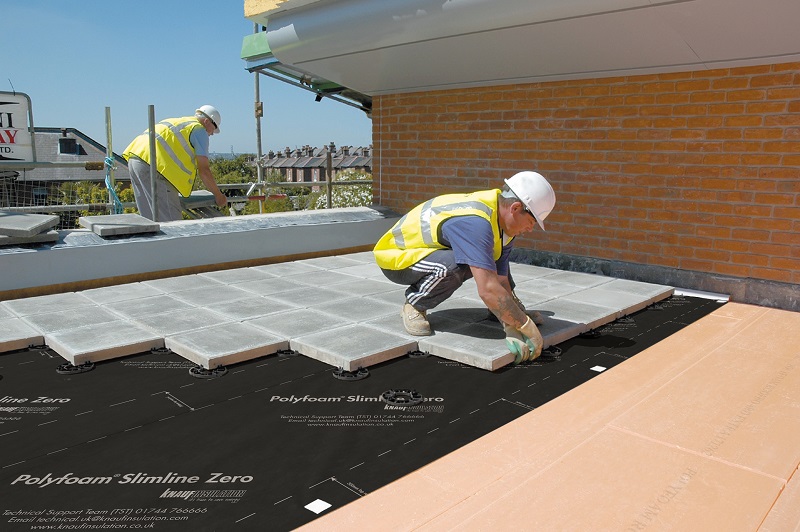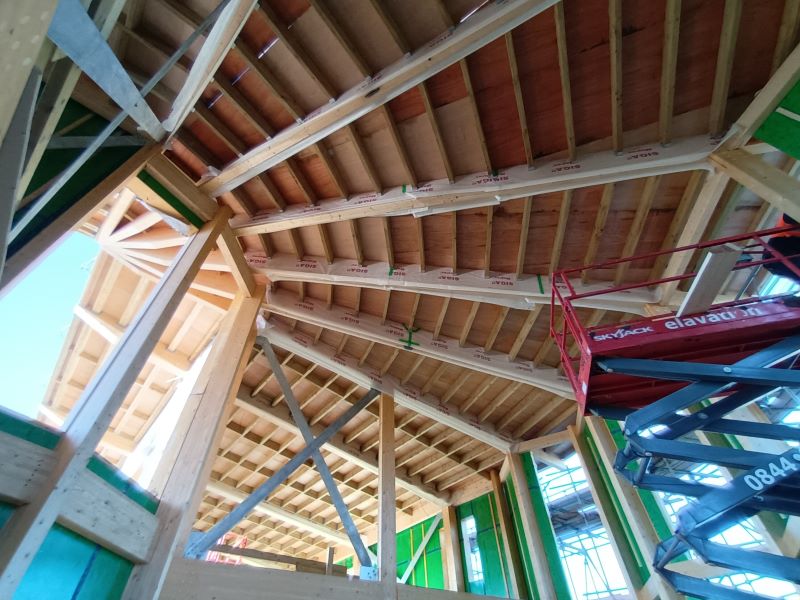Knauf Insulation has highlighted the importance of issuing correct U-value calculations for inverted roof constructions, in order to prevent inaccuracies and ultimately shortfalls in a building’s thermal performance.
Specifying the correct U-values for a building’s fabric is of utmost importance as it forms the basis of any energy or carbon reduction performance assessment. However, Knauf Insulation is witnessing increasing occurrences of incorrect U-value calculations being issued for inverted roof constructions, which has raised concerns from within the roofing industry.

Karen Everitt, Product Manager for Polyfoam XPS at Knauf Insulation, commented: “When clients speak to experts in our profession, they expect the very best advice and should have the confidence that the recommendations from the specialists conform to the regulations set out within the industry. It is concerning that a number of vital factors, which must be taken into account when calculating U-values for inverted roofs, are being disregarded.
“As such, we would recommend that specifiers liaise with a reputable insulation manufacturer to obtain the correct U-value calculation for inverted roof applications using the design thermal conductivity. This will prevent shortfalls in achieving the specified U-value and ensure that the thermal performance of the roof complies with the specification and the Building Regulations.”
The measure of heat loss associated with a building element can be calculated quickly, accurately and consistently using U-value software. However, when it comes to inverted roofs the following considerations must be taken into account:
- Rainwater Cooling - In an inverted flat roof construction, the insulation is placed above the waterproofing layer. Whilst this brings advantages for the application, it can introduce an additional mechanism for heat loss; if permitted, rainwater will flow beneath the insulation boards and remove heat directly from the building fabric before finally running off the roof and down the rainwater drainage outlet. This is commonly known as the Rainwater Cooling effect and must be taken into account when calculating the U-value. The Rainwater Cooling effect can be reduced by installing a water-reducing membrane over the insulation and is an essential component of a well designed inverted roof insulation system.
- Declared and Design Thermal Conductivity - The declared thermal conductivity refers to the value that is obtained for 90% of production, with a 90% confidence level, thus increasing assurance in the product’s thermal performance. In essence, it is the thermal conductivity of the product when it leaves the factory. In practice though, the insulation in an inverted roof is subjected to environmental conditions (rainfall as well as freeze thaw and moisture absorption by diffusion), which can have an effect on the efficiency of the thermal insulation. By applying moisture correction factors, (in accordance with BS EN ISO 10456) the insulation is assigned a design thermal conductivity. This is confirmed by best practice guidance on the design of inverted roofs, which can be found in the European Technical Approval Guidance (ETAG 031-1).
Karen continues: “Manufacturers should take the lead and only provide the correct U-value calculations in line with Building Regulations and the BBA U-value Condensation Calculation Competency Scheme. This is vital to achieve consistent and correctly calculated U-value calculations, to ensure the building performs as per the specification.”
Knauf Insulation is a fully accredited member of the prestigious and industry leading TIMSA/British Board of Agrément (BBA) U-value and Condensation Calculation Competency Scheme. This provides specifiers and contractors with utmost confidence that the inverted roof U-value and condensation calculations supplied by the UK’s leading insulation manufacturer are in line with all the relevant industry standards.










